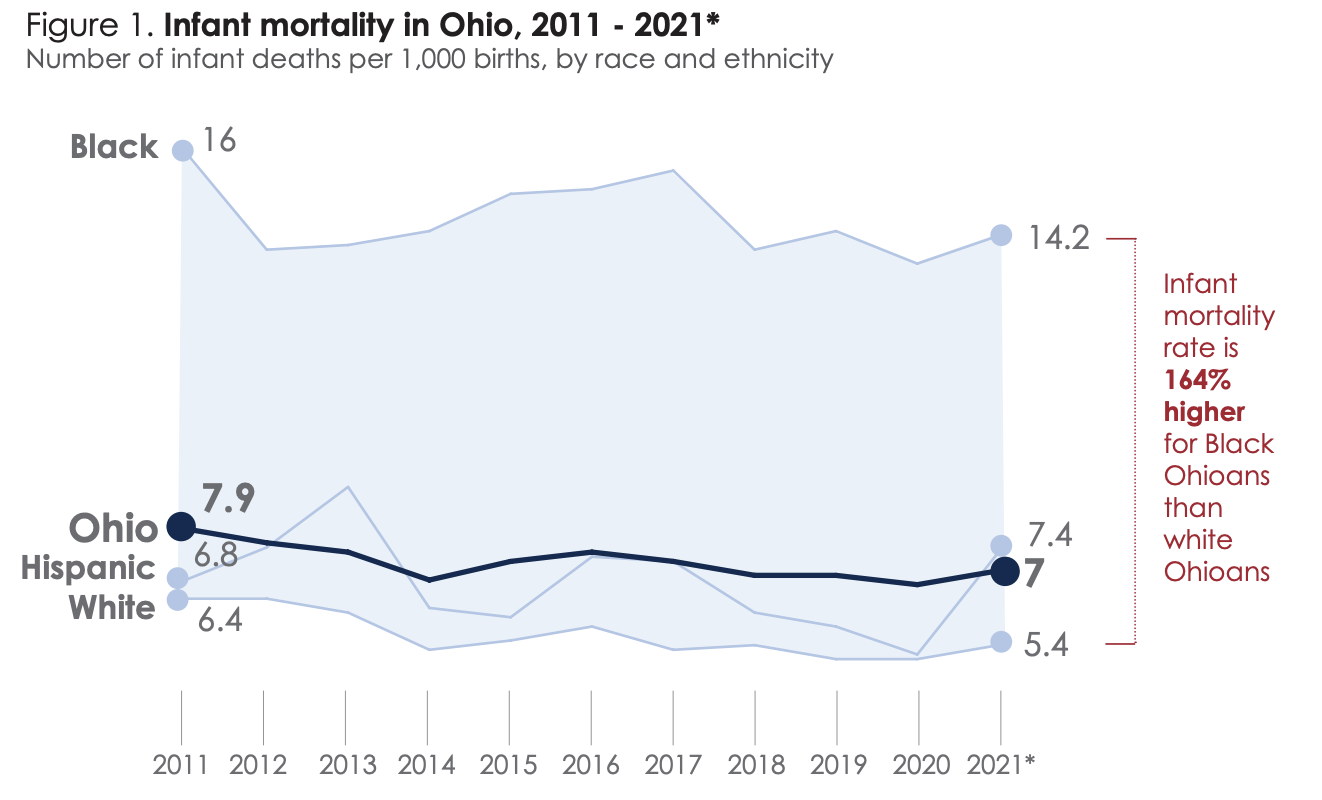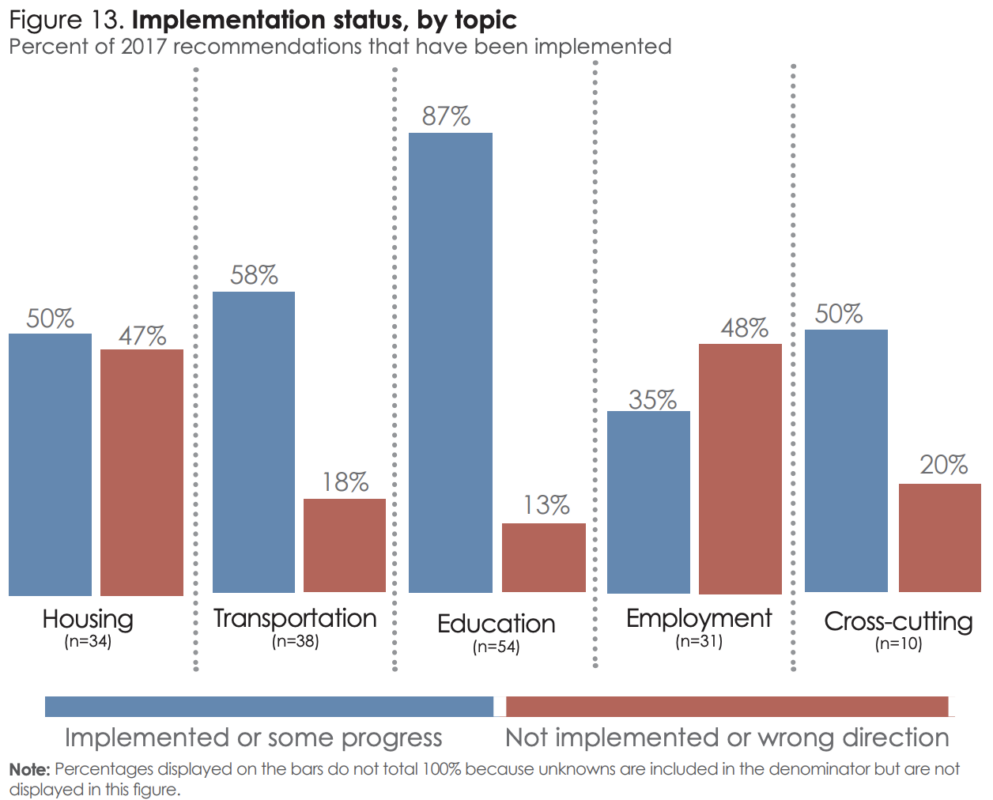A new study shows persisting infant mortality gaps in Ohio’s minority population that demand more than just health care intervention.

A report by the Health Policy Institute of Ohio for the last decade showed infant mortality has gradually gone down overall, but for Black Ohioans, the rate is still 164% higher than for white Ohioans.
“Despite the efforts of many in both the public and private sectors, progress since 2011 has been minimal and uneven, and Ohio’s infant mortality rate remains higher than most other states,” the study found.

From 2011 to 2021, the overall infant mortality rate has gone from 7.9 to 7 per 1,000 births. But in Black babies, the rate has gone from 16 per 1,000 births in 2011 to 14.2 in 2021.
Hispanic infant mortality rates are slightly higher than the state average as well, at 7.4 deaths per 1,000 births.
“These racial disparities in infant mortality persist even when taking parental income and education into account,” according to the study. “Rather, the evidence is clear that racism is a primary driver of racial disparities in infant mortality.”
The study also comes as new data from the CDC shows maternal mortality is higher in new mothers than in other industrialized nations, and deaths for Black infants nationwide went up over the course of the COVID-19 pandemic.
Half of the “modifiable factors” the institute found in the 2023 report that would affect overall health were connected to “community conditions,” like education, employment, housing, and transportation.
Leading causes of infant mortality have been found to be poor birth outcomes; sudden, unexplained infant death; as well as accidents, injuries, and violence. Connected to those causes is inadequate access to prenatal and post-natal care, but also lack of access to health foods, physical activity, education, and employment.
HPIO’s study saw poverty and “toxic and persistent stress” as further negative effects on health and equity, causing higher infant mortality rates.
Recommendations made in the study to intervene on non-health care related issues were work supports, employment benefits and leave policies, rental assistance, medical and public transportation supports.

The institute used this report to look in on the HPIO made in 2017, and found that only 17% of the 127 recommendations made in that year’s report were implements.
Progress was made in the areas of education and transportation through prioritization of home visits to Ohio families and ODOT’s statewide bike and pedestrian plan. HPIO found “some progress” in the area of employment with Ohio’s earned income tax credit increase from 10% to 30% in 2019 and a 2021 increase in publicly funded childcare subsidy from 130% to 142% of the federal poverty level.
The institute found the state making no progress in the areas of housing, specifically noting House Bill 430, last year’s legislation to block local governments from moving forward with rent stabilization policies or rent control.
Lawmakers could be incentivizing employers to provide child care, especially to low-wage workers, and could change Ohio law to utilize gas taxes and vehicle-fee revenue for transit systems, the study stated.
While efforts have been made by organizations and state agencies to prevent infant deaths, measures that have focused only on public health and pregnancy heath care can only do so much, HPIO researchers concluded.
“Improvements in factors beyond access to care are needed to reinvigorate Ohio’s stalled progress on infant mortality reduction,” the study stated.
Eliminating racism as a whole and “structural barriers” remains among the highest and most impactful priority the HPIO saw in addressing infant mortality going forward.
“Racism occurs not only between individual people but is also perpetuated by institutions and systems in society,” the 2023 study stated.
Starting the process of eliminating racism must come with authentic partnerships with Black Ohioans, and policies and programs tailored to them to build trust and engagement.
HPIO recommended that impact assessments be required of the state General Assembly.
“State policymakers can continue to implement and fund evidence-informed policies in existing plans designed to achieve equity in community conditions and birth outcomes,” HPIO stated.
Susan Tebben is an award-winning journalist with a decade of experience covering Ohio news, including courts and crime, Appalachian social issues, government, education, diversity and culture.
The Ohio Capital Journal is an independent, nonprofit news organization dedicated to connecting Ohioans to their state government and its impact on their lives. The Capital Journal combines Ohio state government coverage with incisive investigative journalism, reporting on the consequences of policy, political insight and principled commentary.







